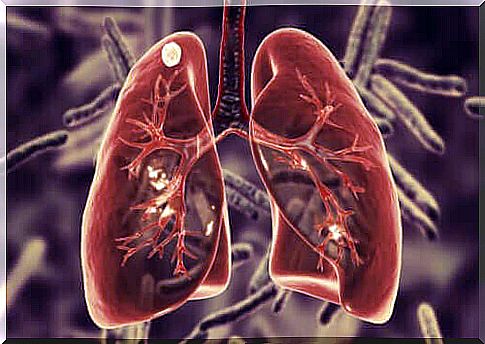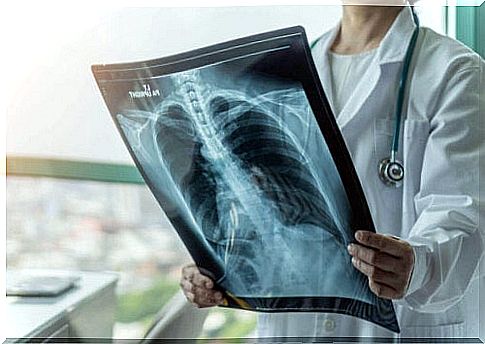What Is Pulmonary Tuberculosis And Its Symptoms?

Pulmonary tuberculosis was a serious public health problem in the early twentieth century. In fact, it is estimated that one in seven people died from it. Thanks to the development of certain drugs, the disease has been under control since the 1940s.
Outbreaks appear to be exacerbated during pregnancy. Pulmonary tuberculosis remains a problem, especially due to a very acute variant that is multi-resistant and is very difficult to treat.
What is pulmonary tuberculosis?
Pulmonary tuberculosis is a disease caused by a bacterium called mycobacterium tuberculosis. In most cases, this microorganism settles in the lungs. However, it can also affect other organs such as the brain and kidneys as well as structures in the spine.
An important aspect is that the disease and the latent infection are different. The first is a conventional disease. The second is a condition in which the bacterium is in the body but does not cause a disease as such. It’s like it’s sleeping.
Most people who inhale the bacterium have an immune system that is able to fight it, thus preventing it from multiplying. However, the microorganism is still there, even if there are no signs.
These bacteria can remain inactive for many years or for life. However, if the immune system becomes weak, they become active, multiply and cause the potentially fatal disease known as pulmonary tuberculosis.

Causes of pulmonary tuberculosis
Pulmonary tuberculosis is a contagious disease as it is caused by bacteria. This means that an infected person can spread it to others who do not have the infection. If the infection is latent, there is no spread.
Infection occurs through water droplets from coughing or sneezing from a person with the disease. Many people recover from pulmonary tuberculosis without a serious course of illness. In some cases, however, the infection is reactivated just a few weeks after it first appeared.
Risk factors
Some people are at greater risk of developing pulmonary tuberculosis. It includes the following groups:
- Young children: Children under 2 years of age.
- Elderly persons: Persons over 60 years of age.
- Weakened immune system: Either from diseases such as HIV and diabetes or from taking drugs or undergoing chemotherapy.
The risk of suffering from pulmonary tuberculosis increases if a person suffers from malnutrition, lives under unhygienic conditions or is in contact with infected persons. Outbreaks are also very frequent in communities where there are more patients with HIV, homeless people or resistant strains of the bacterium.
Factors that do not pose a risk
As we have mentioned, a person with a latent infection does not spread the disease to others. Similarly, tuberculosis does not spread by contact such as shaking hands or sharing personal items (toothbrush, cutlery, etc.).
Nor does it spread by sharing food or drink, kissing, using the same toilet, or by getting in touch with an infected person’s bedding. It is not necessary to disinfect surfaces that a person with pulmonary tuberculosis has touched.
Symptoms of pulmonary tuberculosis
The most common symptoms of pulmonary tuberculosis are severe coughing, which can last for three weeks or more. This cough is usually accompanied by bloody sputum. The infected person feels a great deal of discomfort and has the following symptoms:
- Chest pain.
- Weakness or fatigue with lack of appetite, leading to weight loss.
- Fever and shaking with sweating at night.
- A hissing sound in the chest and difficulty breathing.
Some people with pulmonary tuberculosis also have the so-called drumstick fingers in the more developed stages. They have a wide shape like a drumstick and a change in the angle of nail growth.
It is also common to have sore, swollen lymph nodes in the neck and other parts of the body. Likewise, there may be pleural effusion, which is fluid in the lungs. In some cases, complications such as hepatitis, brown or orange tears and urine, rash and changes in vision occur.

Early detection improves the prognosis
Patients with the latent infection have no symptoms and do not feel any discomfort. A skin or blood test reveals that they are positive for pulmonary tuberculosis when they undergo a test for another cause. Even if there are no symptoms, it is important to start treatment to prevent the disease from developing.
When the detection and treatment of pulmonary tuberculosis takes place early, the prognosis is good. The symptoms usually disappear within two to three weeks. Failure to treat the disease properly can have life-threatening consequences.









